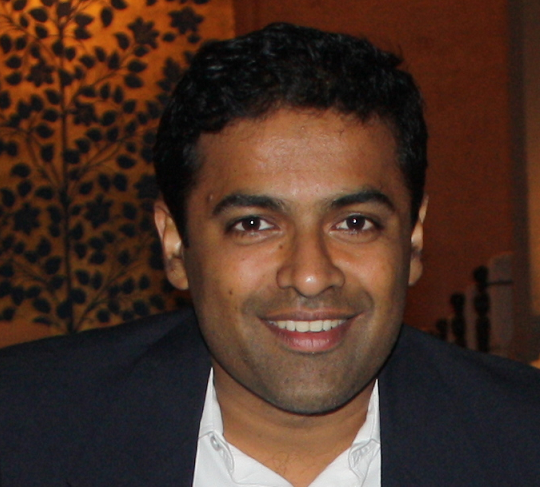Breaking the Top-10 Ceiling: How can Indian paddlers move from junior to senior and dominate?
India has produced Jr. World top-10 players in table tennis, yet the transition into the senior circuit has not been easy. What are the underlying reasons - paddlers G.Sathiyan and Manav Thakkar explain.
Table Tennis. One of the most popular indoor sports in India is played by all age groups across schools, colleges, and corporate offices. It ticks all boxes – low on infrastructure and equipment, independent of external weather, efficient timewise, exciting to play, and fun to watch. However, despite the advantages, the mass participation at the grassroots has not created a ‘trickle-up’ effect at the professional level compared to cricket or badminton.
In this article, we gather insights from Manav Thakkar and Sathiyan Gnanasekaran on the “Why – What – How” of converting success from the junior level to the senior circuit. Manav is a former World No.1 junior player and is currently ranked no. 123 at the senior level. Sathiyan has been the highest ranked Indian (World No. 24 in May 2019) and is currently ranked world no. 35 as per the latest ITTF rankings list and is an Olympian as well.
The grassroots scenario
Despite the vast popularity of table tennis at the recreational level, the systemic funnel upwards that includes talent identification and nurturing needs a closer examination.
“While it is true that millions of Indians have experienced playing or watching table tennis while growing up, the phenomena is limited to urban metropolitan cities like Delhi, Calcutta, Chennai, or Bangalore. The penetration of the sport into the hinterlands is relatively low compared to the Tier-1 cities,”
said Sathiyan, who was a product of Chennai’s table tennis culture during his junior days.
Unlike cricket or football, which need large playgrounds, the sport table tennis does present an excellent opportunity for schools, clubs, and academies across geographies. However, just setting up tables won’t do. The next set of building blocks, namely standardized curriculum, supply of qualified coaches, and talent identification process, need to trickle down to the bottom of the pyramid. If one nation has done this remarkably well, it’s our neighbour, to the north.
Lessons from China
Table tennis, referred to as ‘Pīngpāng qiú’ by the Chinese, is their national sport, which is amply evident when one travels around the country.
“During my visit to China, I remember walking into a multi-storied building with more than 100+ tables on each of the floors. I had not seen a visual of such a magnitude ever,”
recalls Sathiyan, in an interaction with The Bridge. While that is the visible infrastructure piece of the puzzle, the standardization of the teaching-learning methods established by China is the true differentiator and makes them a leader in table tennis.
“The dominance of China in table tennis is clearly due to the systemic approach, and not due to a few players at the top. How talent moves up from the grassroots into the regional centres and then onto the national centres is efficiently done. And, that allows more children to enter the sport at the grassroots since the pathways are clear,”
stated Manav, the former World No.1 junior player from Gujarat. With a meticulous approach, China has embedded all aspects of the sporting eco-system to create a sustainable model.
“One thing that is evident about China is that they have planned for long-term success. The training module for juniors is about the fundamentals of fitness, nutrition, and technical aspects of the game. In India, we try to delve into tactical aspects early on to win matches at junior competitions, and that short-term strategy comes back to hurt the player in the senior circuit. That’s why we may produce junior World No.1 players, but the next steps in the senior circuit become harder,”
added Sathiyan.
The way forward In the past decade, one increasingly evident aspect is that there is no question of a lack of talent across India. Every time an athlete does well on the world stage, the self-belief of the entire sporting fraternity goes up one notch further.
“No one element is more important than the other; it is about a systemic integration of all elements - infrastructure, coaches, training methodology, support from sponsors, and exposure to competitions, that will allow us to compete well against countries like China, Japan, Korea, and Taiwan,”
recommended Sathiyan. A central training facility on the lines of a national table tennis centre that works in tandem with regional centres could be a game-changer in harnessing the grassroots talent to create pathways for athletes and coaches.
” There has been a considerable improvement in the past 5-6 years with the proactive efforts of the Government initiatives such as Khelo India, the TOPS scheme, and access to training facilities at the Sports Authority of India (SAI). We need to build on this momentum further,”
stated Manav with an optimistic tone. Supplementing the efforts of the Government, a deeper involvement of the private sector is another crucial aspect of the sporting eco-system.
“It is heartening to see private sector organizations contribute to Indian sport through the CSR route and fund non-profit sports entities such as GoSports Foundation and Olympic Gold Quest. However, with increasing costs of advanced sports science training, it is important for the private sector to contribute further,”
added Sathiyan. The fact that Chinese players now know Sathiyan Gnanasekaran and Manav Thakkar by their names, analyze their game styles and consider them tough opponents is a good sign as any. But, as they say in sport, the last mile is often the steepest. And that needs well-oiled machinery at the back-end to achieve consistent podium finishes by our table tennis players on the world stage.
It’s an uphill climb but at least, we have started somewhere.
